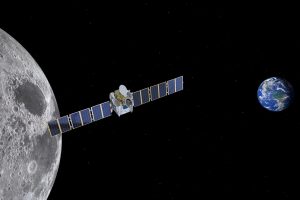The microsats will help provide insight into thunderstorms’ impacts on weather and climate models
The company – a provider of small satellites and spacecraft systems components, and a subsidiary of Raytheon Technologies – says the microsats will fly in tandem coordination, displaying a dynamic atmospheric radar and dynamic microwave radiometer to measure the atmospheric conditions of Earth.
“[Blue Canyon Technologies’] successful science exploration programs and our experience controlling large flexible structures will be key to supporting this critical science mission,” said Jeff Schrader, company president.
The work for the mission will be carried out at Blue Canyon’s Crescent Constellation Factory in Lafayette, Colorado.
INCUS
INCUS is an Earth science mission that will study the behaviour of tropical storms and thunderstorms, including their impacts on weather and climate models.
According to JPL, INCUS aims to “directly address why convective storms, heavy precipitation, and clouds occur exactly when and where they form”. The investigation stems from a 2017 Earth Science Decadal Survey by the U.S. National Academies of Sciences, Engineering, and Medicine, which laid out research and observation guidance.
“In a changing climate, more accurate information about how storms develop and intensify can help improve weather models and our ability to predict risk of extreme weather,” said NASA’s Earth Science division director, Karen St. Germain “This information not only deepens our scientific understanding about the changing Earth processes, but can help inform communities around the world.”
NASA estimated the mission will cost approximately $177 million, not including launch costs.
Raytheon
BCT was founded in 2008 and it was in November 2020 that Raytheon Technologies announced its acquisition of the Boulder, Colorado-based, privately-held company, with the process completed in 2021.
Within the parent company, it reports into Raytheon Intelligence & Space, one of the businesses that make up Raytheon Technologies.
Pictured above is the Blue Canyon 12U spacecraft XB12.
See also: Blue Canyon’s ESPA Grande Saturn to power QS-1 mission
 Electronics Weekly Electronics Design & Components Tech News
Electronics Weekly Electronics Design & Components Tech News




